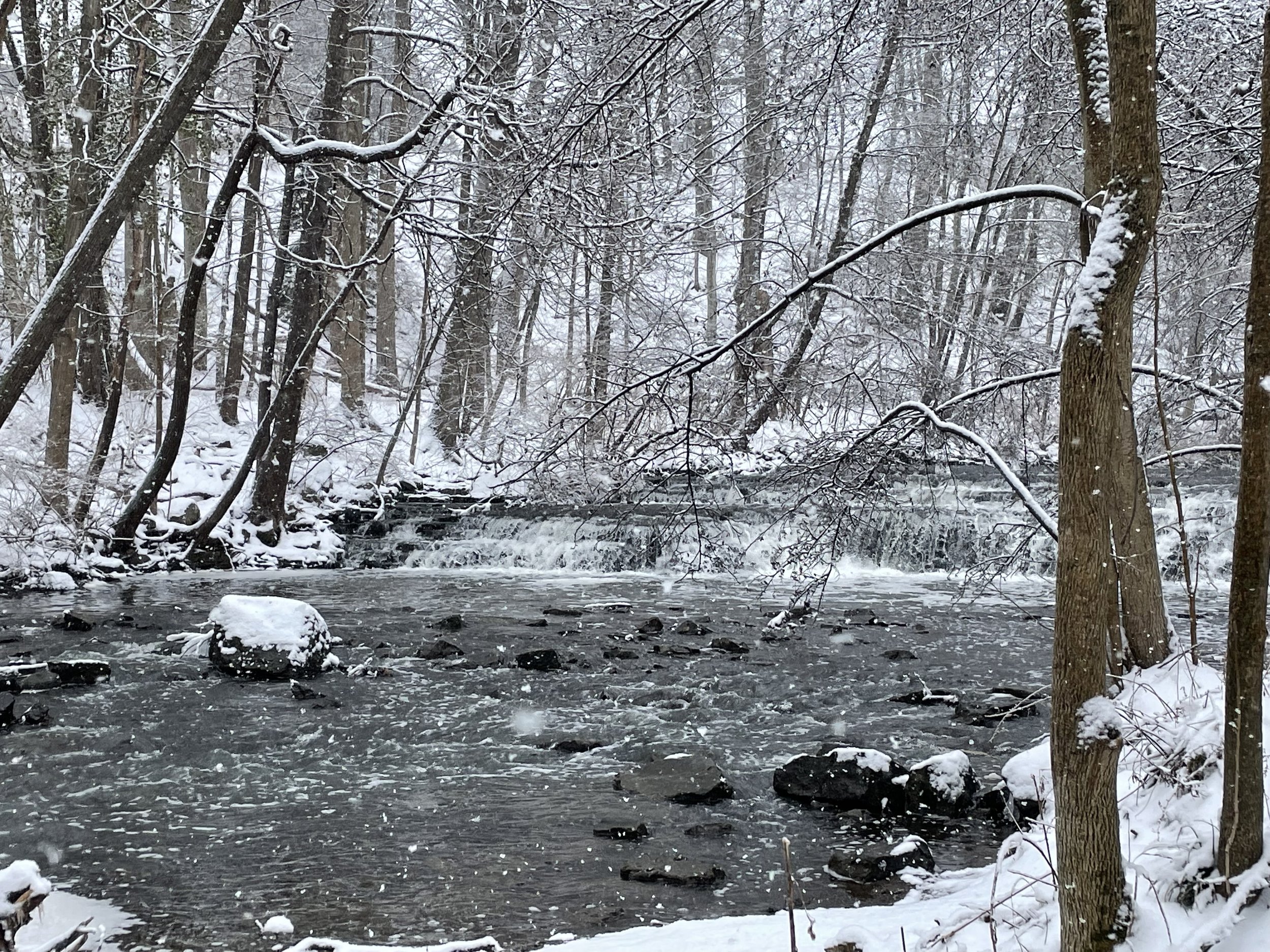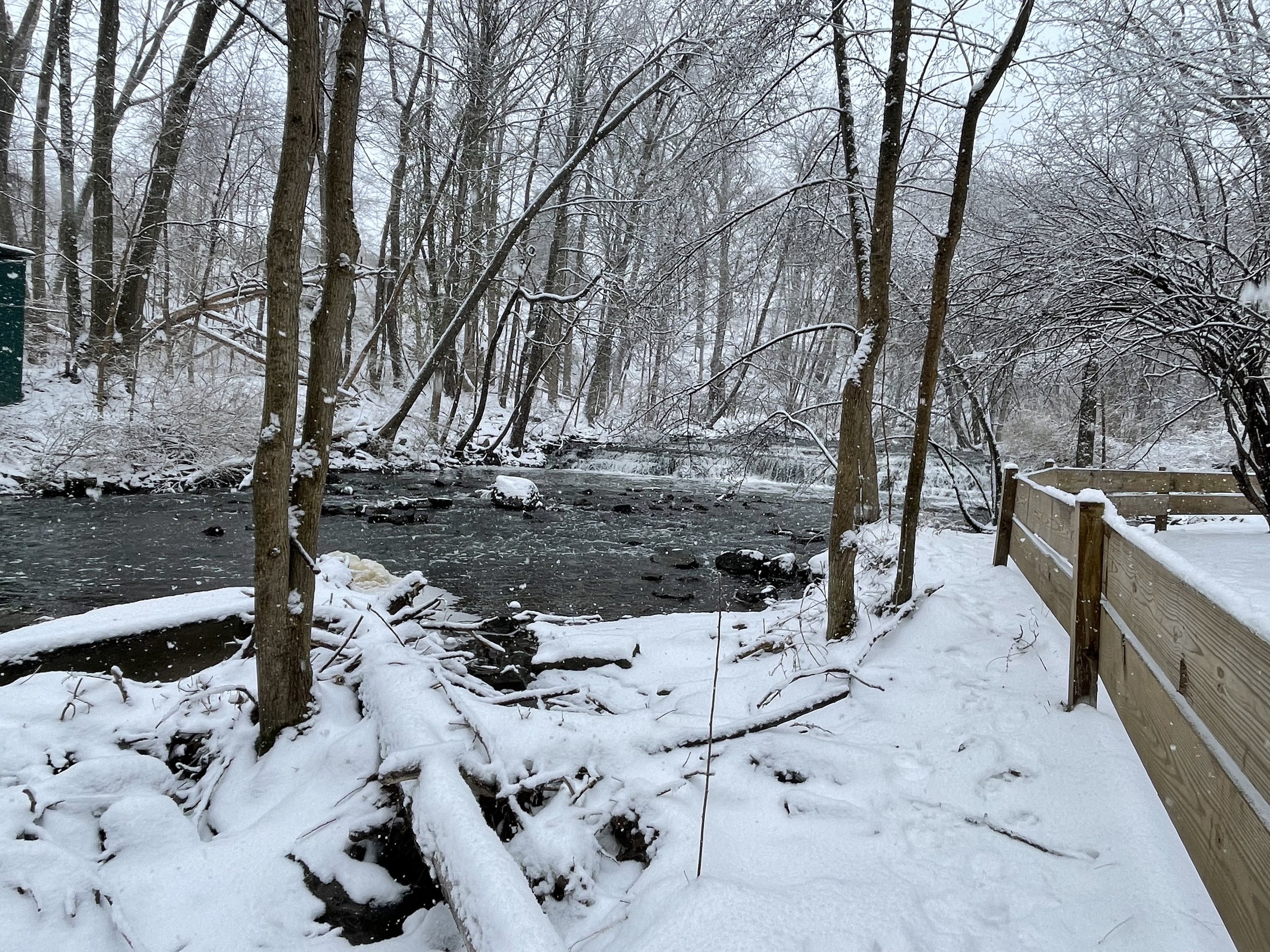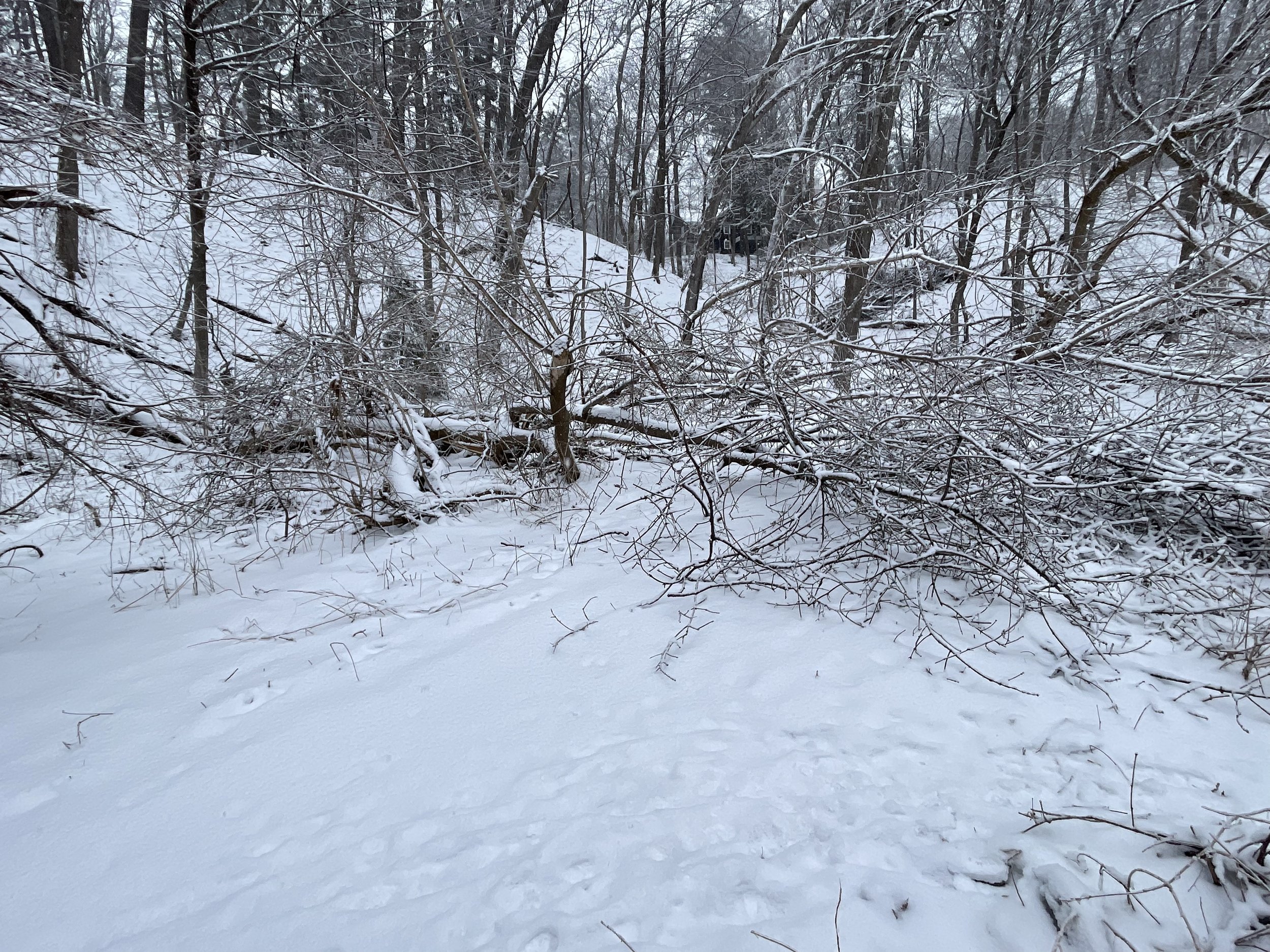On Feb. 25, Elliotte Bowerman, our Director of Communications, brought a friend to explore the winter wonderland of Corbett’s Glen. They parked near the railroad tunnel on Glen Road in Brighton. Parking at this end of the park is limited to a few roadside spaces, but it is the best entrance if you want to avoid hills. There is also a parking lot at 415 Penfield Road, but getting to the creek requires a couple steep hills and a longer walk.
If you’re interested in learning about the history of the railroad at Corbett’s Glen, this page has a lot of information and historic images: Trestle, Tunnel & Trainwrecks
Before there was a tunnel into the glen the railroad was carried over Allens Creek by a 1/8 mile long, 70 ft. high wooden trestle. The trestle was built in 1853 as part of a “Direct Line” from Syracuse to Rochester, parallel to the Erie Canal. Actually much of the trestle is still there – buried in the sand of the embankment. Frequent floods of the creek made maintenance of the trestle a constant burden. In 1879 sand from the Sand Cut just to the east was used to begin a “Great Embankment” with a tunnel made from dry fitted limestone blocks, quarried from a nearby outcropping, to carry the creek and Glen Road under it.
Allens Creek runs through Corbett’s Glen into Irondequoit Creek and ultimately ends in Irondequoit Bay/Lake Ontario. Protecting fresh waterways helps keep drinking water clean, as Lake Ontario is a water source for millions of people.
According to the Democrat and Chronicle, Allens Creek powered a saw mill built in 1806 that closed in 1953 and was the home of a powder mill until an explosion in 1848. Today, this portion of the creek is safe from any development and visitors are asked to stay within the fence to keep the creek undisturbed. Note: fishing and swimming are NOT allowed.
While walking along the creek, Elliotte spotted two pairs of ducks and took a brief video before walking on to the quiet meadow.
Corbett's Glen is surrounded on three sides by sandy ridges deposited as the glaciers that once covered the area melted and receded. Upon entering the Glen, one is struck by the feeling of being nestled in a special place, far from the hectic pace of modern life. Remnants of its previously forested state are located on the higher elevations of the Glen where some oaks are estimated to be over 150 years old.
The walk also revealed a surprise - a little chair placed on a large fallen tree trunk. Elliotte couldn’t resist trying it out.
The Glen is a traditional migratory stopover for birds in the spring and fall and remains a haven for wildlife including great blue herons, wild turkeys, deer, and beaver.
Part of the 2 miles of trails includes a boardwalk that goes through a marsh filled with pussy willows. This can be a little slippery when covered in ice or snow.
Elliotte also noted a large tree had fallen across part of the path, and Genesee Land Trust contacted the Town of Brighton to alert them. After Genesee Land Trust raised funds to “Save the Glen” in 1999, the 52-acre property was turned over to the town for ongoing maintenance. It has become a very popular recreation and relaxation spot.
If you ever encounter a trail issue like a fallen tree or broken boardwalk, it’s very helpful to alert the town so they can take action. Please see the town link below.
For more about Corbett’s Glen:
Corbett's Glen Nature Park — Genesee Land Trust
Corbett's Glen Nature Park | Brighton, NY - Official Website (townofbrighton.org)
The History of Corbett's Glen — Allens Creek Corbett’s Glen Preservation Group
Corbett's Glen Nature Park (Brighton, NY) Waterfall Guide (nyfalls.com)









